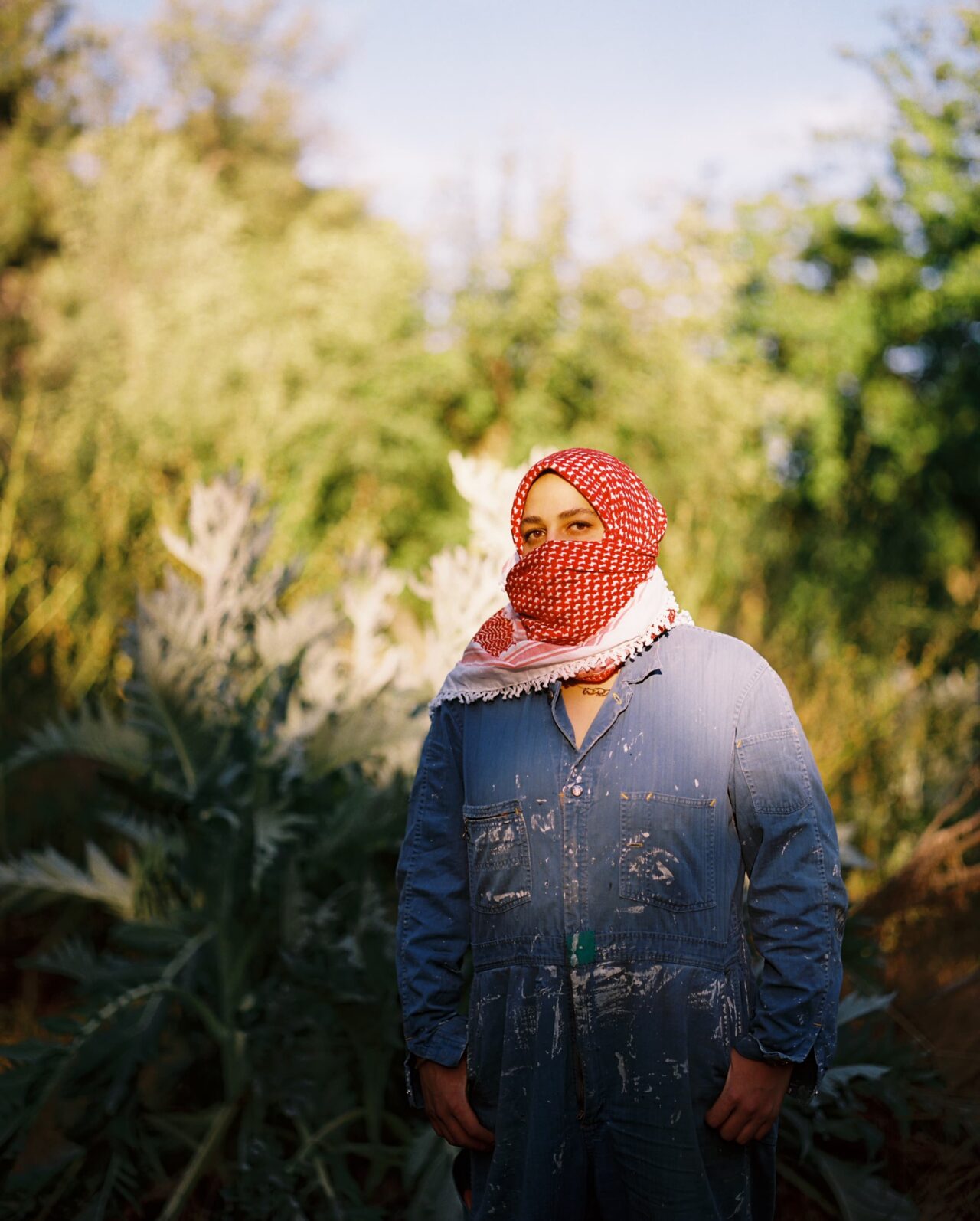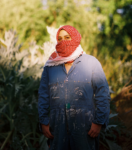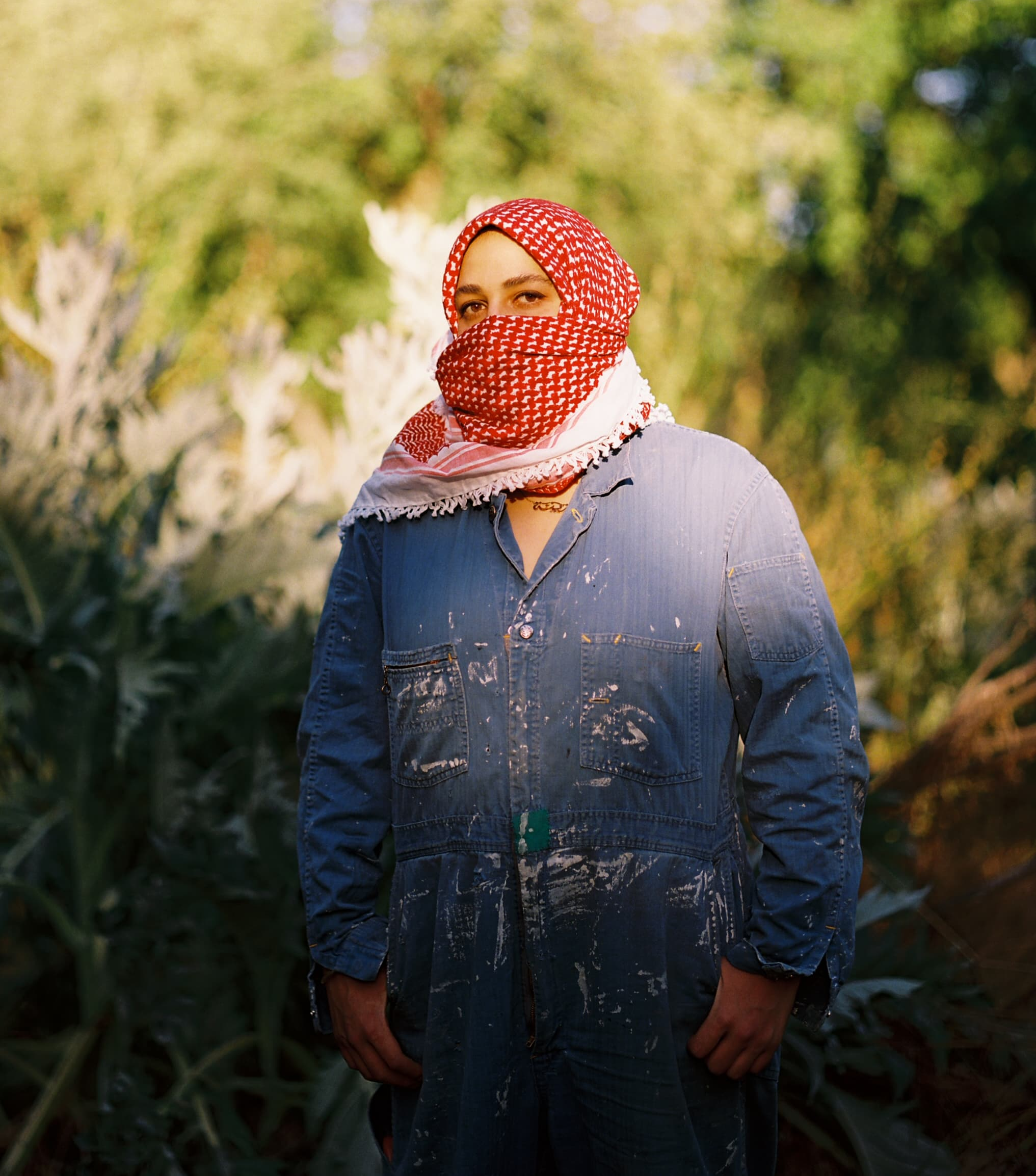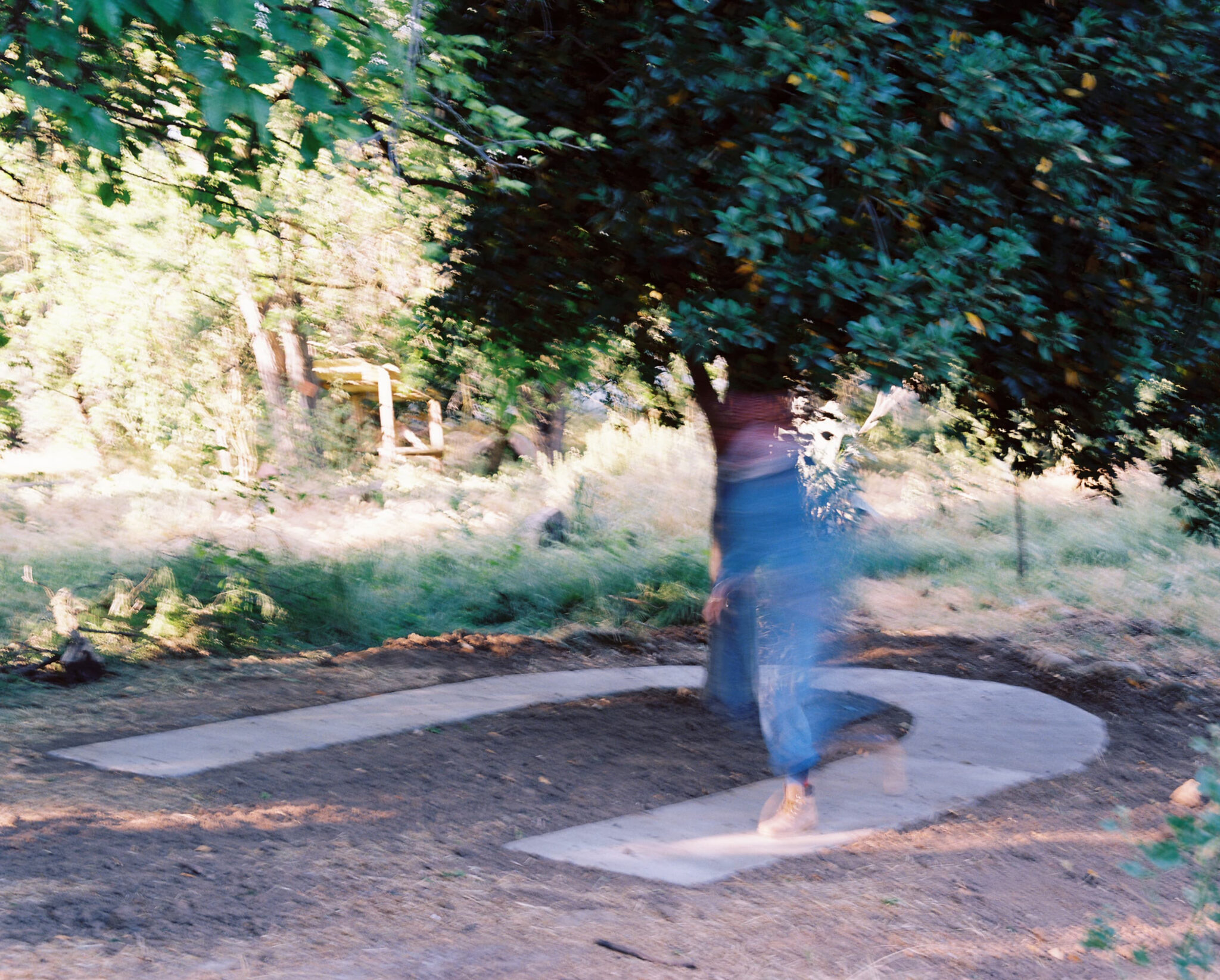How do you characterize the media you work in?
I started out as a printmaker and papermaker; my early work involved imprinting on the ground I walked on. It’s not one-to-one, but these kinds of processes, gestures, or motions crop up in all kinds of projects, like building a penny press machine using a die cut process (Token Bitch [2022]) or making a concrete cul-de-sac (Sidewalk [2020]), where I’m sifting concrete instead of paper pulp. I’m always thinking about layers of information, whether the work is taking the form of a piece of sidewalk, a penny press machine, or a tray of baklava.
How does your practice engage with technology?
In my work I often ask how I am being surveilled, watched, and perceived across platforms. I’m interested in how surveillance operates on the street and online, particularly as it applies to the racialized body and the disabled body. My project Observer/Observed (2018–2020) grew out of my thinking about surveillance at liquor stores and convenience stores—places where people from all kinds of backgrounds intersect—and the surveillance of Black and brown customers, in particular. The project involved a lecture series that addressed medical, intercultural, and government surveillance, and looked at the faultiness of surveillance and the ways in which it can be altered and instrumentalized.
What was your focus during your time at Eyebeam? Was there a culminating project?
While I predominantly concentrated on my social work on the ground during the fellowship, I did present an artwork in connection to the fellowship in the exhibition Radical Experiments: Making Space/Breaking Space. I showed Take It Lying Down (2014–23), a performance film in which I did Islamic prayers on the sidewalk, so the prayer extended to the entirety of the sidewalk. I’m not making work directly about being disabled or Arab American or other markers of identity, but I’m interested in the experiences that I’m bringing to the place where I stand—including the unbelievable privilege that I’m even standing—and the vulnerability of the moment of approach, perception, and meeting.
How has dialogue or collaboration with Eyebeam artists and alumni factored into your work?
A big part of the fellowship involved sharing ourselves with each other, in the way you might with a grad school cohort. I think that our biweekly meetings were the crux of the program; the cohort was this diverse international group, and I got so much out of our dialogue. We all collaborated on a lecture series. I participated in a panel on Disability, an interview about labor in my art practice, and a panel about care. We took time to really unwrap questions like that of decolonization, for example. Is it even possible? What does it mean other than giving land back? The collaboration was in these conversations.
How do you think about the role of the artist in society?
In my own work, I’m always thinking about how I’m moving through the world and what that means. I feel I have a responsibility to look at who I am, where I’m from, how I’m perceived, and where I’m standing—not to make work about identity per se, but to continue this spiritual practice of asking what, how, and why, as part of the spiritual labor of decolonizing the self. I’ve been trying to be a guide to students and other folks too, to help them find value in the intersecting pieces of who they are, the coming together of who they were and who they are and who they can be. I think my work creates a genuine interaction between me and others. And I think that’s really the good stuff.




